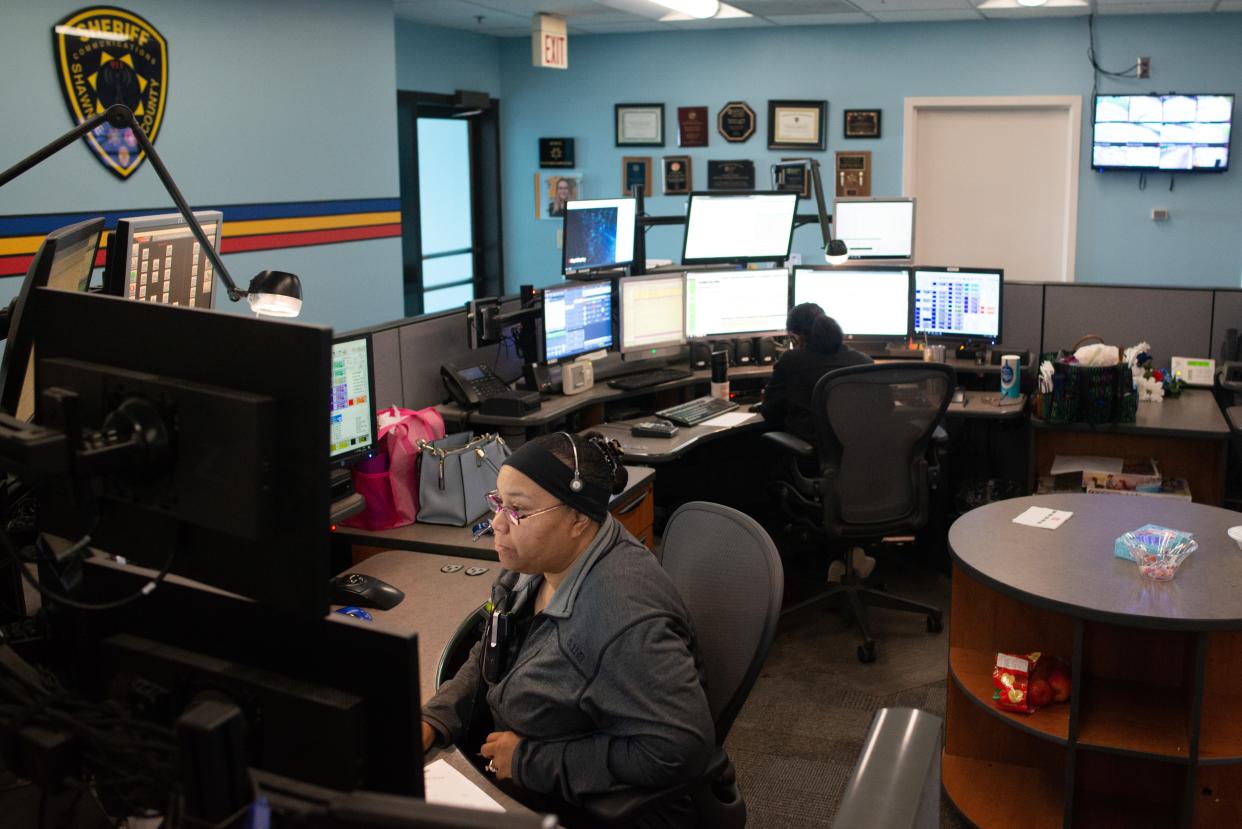New software will help Shawnee County determine which emergency callers to prioritize

Shawnee County commissioners made a move Thursday that's expected to reduce the number of ambulance trips made in response to the thousands of calls the county receives annually from people who don't need them.
Commissioners made changes to the Shawnee County emergency calling system that will enable those callers to instead talk to a nurse, who can help best address their problems without an ambulance ride.
Commissioners Aaron Mays, Bill Riphahn and Kevin Cook voted unanimously to approve authorizing and executing the implementation of the Nurse Navigation and Crew Force process.
Cook said the phrase "Crew Force" doesn't refer to personnel and hiring but the name of the software involved.
More:President Jimmy Carter visited Topeka and once got lost at Lake Shawnee
The program will help the Shawnee County Emergency Communications Center and American Medical Response, the county's ambulance service, as they work to ensure callers are sent to the right location at the right time, said Nelson Casteel, the county's ambulance compliance officer.
The program will enable people who don't need immediate attention to get in touch with a nurse, who can arrange doctor appointments or have them be transported to a hospital at a later time. AMR can engage in Uber and Lyft rides for people to be transported instead of an ambulance, Casteel said.
Scarcity of resources determines who gets prioritized first
While 911 calls can be made for a variety of reasons, the Nurse Navigation and Crew Force will help enable rescue workers who are coping with a scarcity of resources to identify priorities for immediate emergency response.
When an ambulance arrives on scene, if the patient doesn't need to be transported but still needs help, that will be arranged as part of the process being put in place, Casteel said.
More:Shawnee County takes step toward potentially reducing its number of ambulance calls
Commissioners voted 3-0 in January 2022 to direct the county staff to negotiate the implementation of wording regarding the nurse navigation line into the county's contract with AMR.
The line's presence is anticipated to eliminate almost a quarter of the roughly 16,000 ambulance transports AMR makes annually in Shawnee County, commissioners heard last year from AMR's Mickey Huber.
Will you notice the difference when making an emergency call?
Individuals who make an emergency call should not notice a change when they're on the phone with an emergency dispatcher.
When a dispatcher asks, "Do you need police, fire or medical?" and callers may need medical, it will transfer to the AMR dispatch, who will be able to determine the best solution to a caller's emergency based off the caller's answers to questions. Solutions would involve transferring the call to a nurse or sending an ambulance.
"The nurses will all be licensed in Kansas, but they may be in a call center elsewhere," Casteel said. "It should feel normal."
More:Topeka city manager proposes creating a land bank using some leftover money from 2022
Jon Antrim, regional director for Global Medical Response, AMR's parent company, told commissioners at a work session Monday that dispatchers after receiving the answers to three questions usually know if the patient is experiencing a true advanced life support emergency, and, "Typically, that takes less than 30 seconds."
It takes "about 90 seconds" to make a determination regarding less-urgent calls, such as toothaches, sore throats, headaches and stubbed toes, he said.
AMR's service isn't being lessened but improved, Antrim said.
"Especially to some of these underserved communities that rely on the ambulance and the ERs that are primary health care," he said. "This is going to allow us to get them into the nurse navigation system and maybe we can navigate them to places like GraceMed and federally qualified facilities."
A date hasn't been set for when the program will begin, but Casteel hopes to see it implemented in the next six weeks.
Keishera Lately is the business reporter for the Topeka Capital-Journal. She can be reached at klately@cjonline.com. Follow her on Twitter @Lately_KT.
This article originally appeared on Topeka Capital-Journal: Nurse Navigation and Crew Force to help with Topeka-area 911 calls

